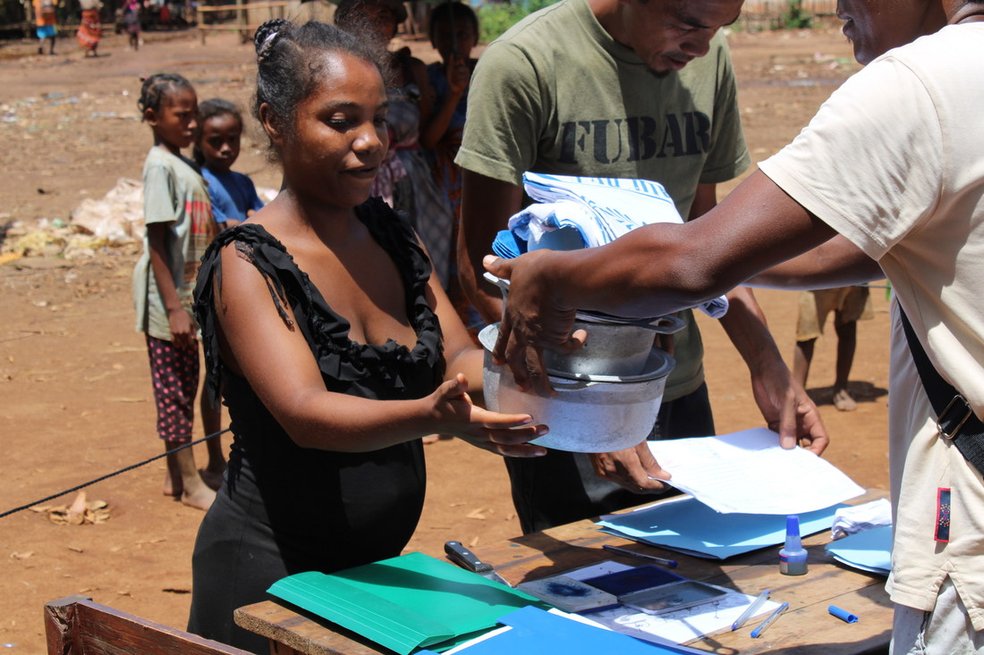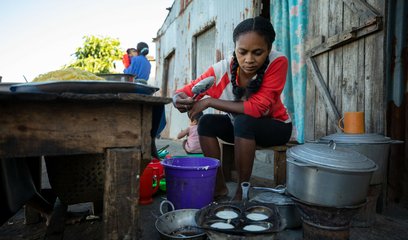-
80 %
More than 80% of the population live in poverty
-
25 %
25% of children are chronically under-nourished
Madagascar: Key facts
- Population: 31.1 million
- Area: 581,795KM2
- Literacy rate: 77.5%
- Life expectancy: 65 years
Madagascar is one of the largest islands in the world and is located in the Indian Ocean off the east coast of southern Africa. The country has a unique biological diversity and is considered a natural paradise.
Despite the outstanding natural beauty, life is hardly a paradise for the population. More than 80 percent live in abject poverty and have to get by on 2.15 US dollars a day. Madagascar is one of the ten poorest and least developed countries in the world. Hunger is widespread. According to the Global Hunger Index 2024, the situation in Madagascar is classified as 'alarming'.
Drought, hurricanes, floods
The island state is heavily exposed to the effects of the climate crisis. The country suffers from prolonged droughts and violent hurricanes. Around 70 percent of people work in agriculture. For the subsistence farmers, if they harvest less, they have less money in addition to having less food.
Around half of the population do not have enough to eat and almost one in four young children are chronically malnourished.
Child labour on vanilla plantations
Madagascar is known for the production and export of vanilla. However, the dark side of growing the fragrant pods is child labour. According to UNICEF, hundreds of thousands of children and young people are forced to work in agriculture - often on vanilla plantations.
Crises and systemic injustices have a particularly detrimental effect on girls and young women. They have fewer opportunities for education and are more likely to suffer from hunger. They are also more likely to be subjected to early marriage and experience violence.
The untouched natural environment and its wildlife are coming under increasing pressure due to high population growth. Fertile soils are being destroyed by erosion and silting.
CARE in Madagascar

CARE has been active in Madagascar since 1992, working to combat poverty and social exclusion. By 2028, CARE and our partners will have reached one million people with projects on the island.
We support the population with strategies for protection against catastrophic weather extremes. We also strengthen the economic independence of women through small savings groups. Planting giant yams and improving access to education for children in crisis-hit communities are amongst the sustainable initiatives that have borne fruit.
In recent years, CARE has supported the development of a network of feminist organisations and capacity building to promote gender equality in Madagascar.
Ten forgotten crises
The CARE Crisis Report is published annually and highlights the ten crises that receive the least media attention. In 2024 Madagascar ranked as the third least reported crisis in the world.
